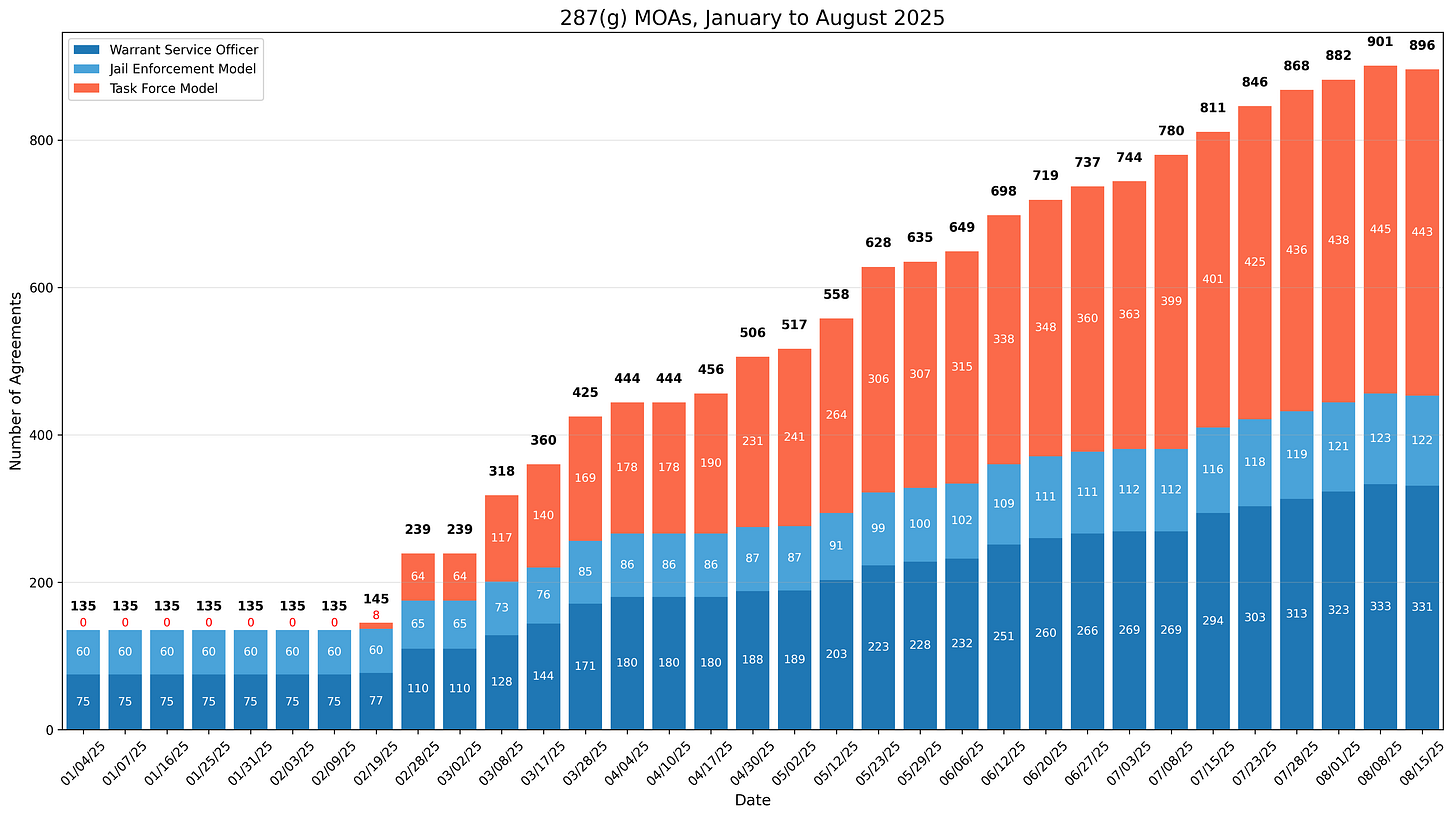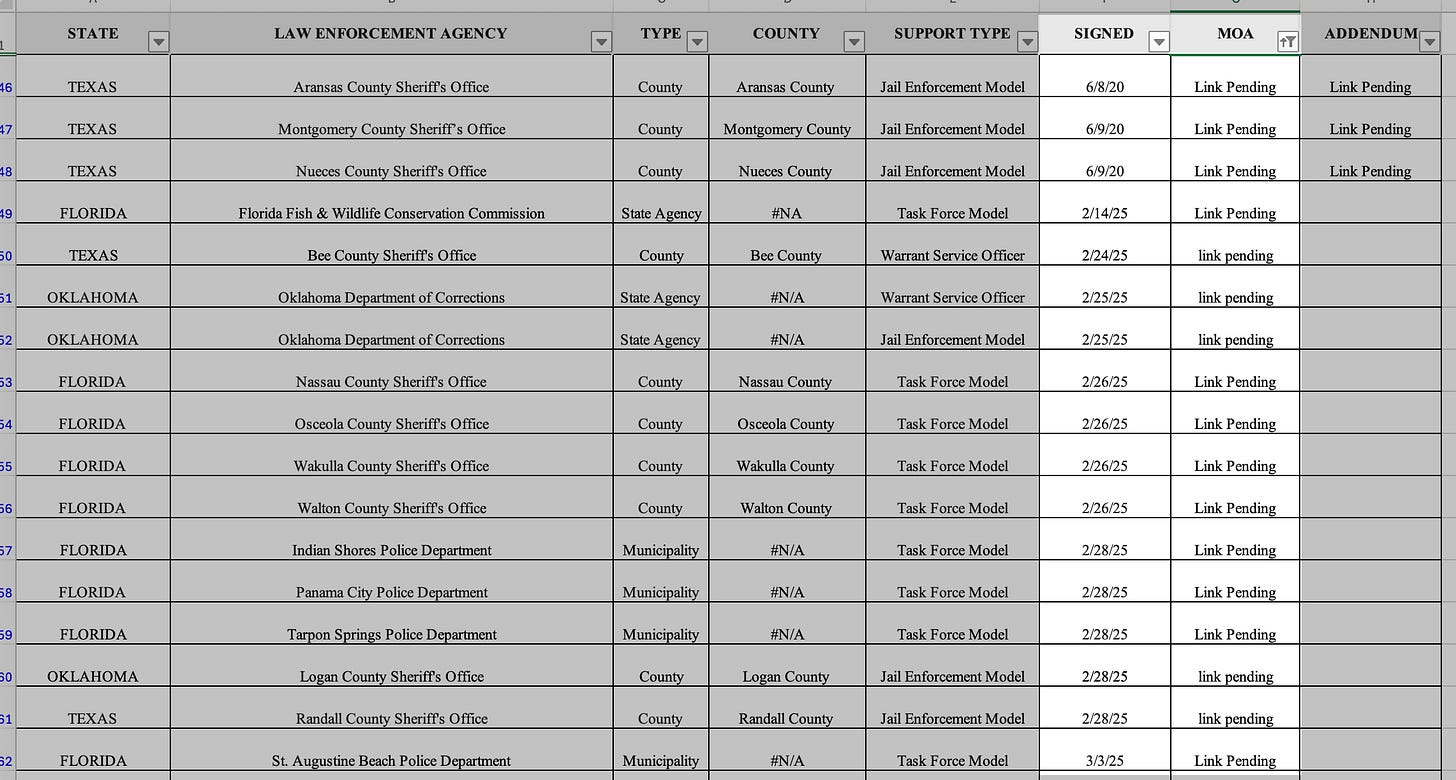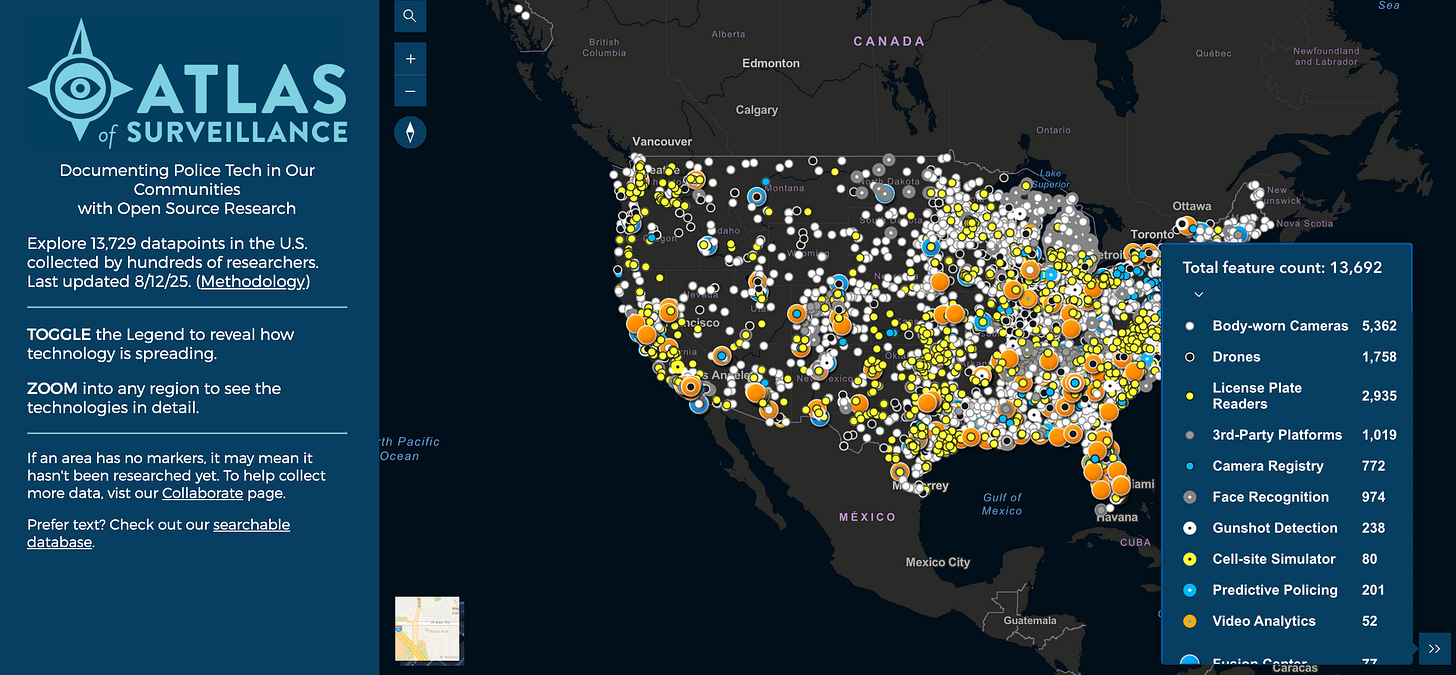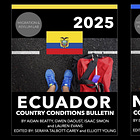ICE's 287(g) Program Explodes to 900 Agreements Under Trump
Local law enforcement agencies across the country are signing up to participate in ICE's mass deportation efforts. Florida and Texas lead the way. Most aggressive "task force model" now dominates.
ICE’s latest data on 287(g) agreements across the country continues to show massive growth. As of August 15, 896 Memoranda of Agreement (MOAs) were in place across about 690 agencies. The largest growth comes from the most aggressive Task Force Model of 287(g), which has expanded to 443 jurisdictions—or nearly half of all MOAs.
In January, before the Trump administration, just 135 agreements were in place; at the time of my previous post in April, ICE had signed 444 287(g) agreements across the country. The current total of around 900 is now double that. ICE currently lists another 50 jurisdictions as pending. This suggests we could see 1,000 287(g) MOAs by the end of the calendar year, if not sooner.
The graph above is based on compiled data from 287(g) spreadsheets published on Fridays, or as close to Fridays as possible, rather than attempting to collate and validate the hundreds of spreadsheets ICE has published so far this year. Note that one agency may have multiple MOAs, one for each of up to three types of 287(g).
Also note that the graph shows a small decline in August, but I’m not convinced this represents reality. As I discuss below, there is some junk in the data from ICE’s generally sloppy data management practices around 287(g) (this is not new). I wouldn’t make a big deal of it unless we see a trend emerge over the next few weeks.
The map below shows the total number of MOAs by state. At least one agreement exists in 42 states, with only eight states resistant so far to participation in ICE’s enforcement program (California, Connecticut, Delaware, Hawaii, Illinois, New Jersey, Oregon, Washington). Florida continues to lead the way with the largest number of MOAs at 318, or more than a third of the national total. Texas has 137, or 15 percent of the total. No other state comes close to these two states. The largest group (9) of the 50 pending MOAs is in Pennsylvania.
The expansion of 287(g) agreements coincides with a similarly dramatic rise in ICE arrests across the country in the past few months. We shouldn’t assume a causal relationship here; instead, the two trends are part of the larger push for arrests, detentions, and deportations across the country using a variety of overlapping and complementary strategies. See my previous post on ICE arrests.
Junk in ICE’s 287(g) Data
Tracking 287(g) agreements remains challenging because the data published by ICE contains various errors and inconsistencies that require constant vigilance and attention to detail.
In some cases, agency names change over time (including due to misspellings or mislabellings), include trailing spaces, or are listed multiple times. For example, the latest updated dataset currently lists the Volusia County Sheriff’s Office in Florida twice, both as Task Force agreements signed on February 26, 2025, even though this represents the same agency.
These kinds of duplicate entries and rudimentary formatting issues complicate efforts to establish an accurate count of agreements. While I have validated these overall numbers, I did not try to identify and explain every single error. ICE is publishing these spreadsheets almost daily and sometimes twice a day, so the potential for mistakes is huge.
The Case of the Missing Memoranda of Agreement
Out of nearly 900 active agreements, more than a quarter—28 percent or 252 total—still don’t provide access to the MOA as required. Understandably, recently signed MOAs might take a few days to update, but this is not what’s happening. A total of 66 agreements listed as “Link [to MOA] Pending” were signed before June, another 58 were signed in June, and 109 were signed in July.
About 287(g)
287(g) is a controversial immigration enforcement program that allows local law enforcement agencies to participate in federal immigration enforcement activities. The program is controversial due to concerns about the potential for civil rights violations, the fact that the program cuts into local budgets, and may erode trust between communities and cops. In many localities, participation in 287(g) has prompted public protests. Nevertheless, since 9/11, 287(g) has served as a “tip of the spear” program during times of heightened immigration enforcement, such as during the first Obama administration and now.
To learn more about the types of 287(g) agreements, read my previous post, listen to my conversation with Jessica Pishko about the role of sheriffs in 287(g), and see my research with Mat Coleman on racial profiling and immigration enforcement in 287(g) jurisdictions.
Tracking Police Surveillance
If you find this post interesting, you might also be interested in learning more about how police departments across the country are using surveillance technology. My friends over at MuckRock have been partnering with the Electronic Frontier Foundation and the University of Nevada, and the Reno Reynolds School of Journalism to create the Atlas of Surveillance—the largest repository of records and information on how law enforcement agencies use surveillance technologies. Learn more about the partnership here and explore the Atlas of Surveillance online.
Event Tomorrow — Register TODAY!
Join me for a conversation with Elliott Young and Seraya Talbott-Carey from Lewis & Clark's Migration & Asylum Lab about documenting country conditions while the Trump admin strips key information. It’s tomorrow, August 21, 2025, at 1:00 PM Eastern time. The Zoom registration page is available here, and registration is required. Audience participation is highly encouraged! (Original announcement is below.)
Join me in celebrating over 300 Substack posts! This newsletter—and public events like this—is only possible because of your support. If you believe in keeping this work free and open to the public, join the 100% of surveyed paid subscribers who said this newsletter is a good steward of their investment. You can read more about the mission and focus of this newsletter and learn why, after three years, I finally decided to offer a paid option.









So grateful to be living in southern New Mexico, where our officials handle this issue responsibly!
A couple of questions regarding the missing MOAs:
1. Does that mean the number of 287(g) MOAs is actually significantly higher?
2. Do you attribute this discrepancy to "bookkeeping" sloppiness?